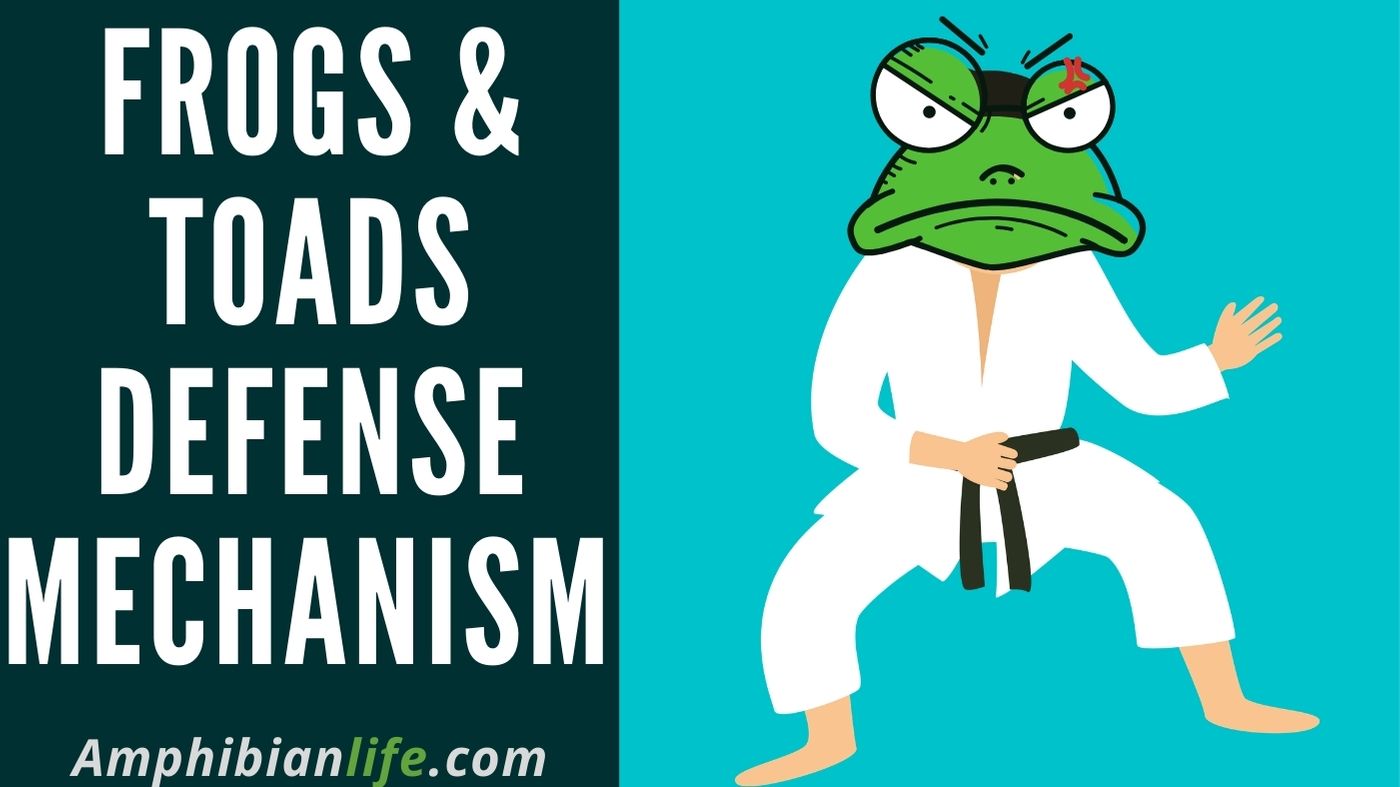
how do frogs protect themselves?
Self Defense and Protection in an inherent quality all living organism possess from small insects to even humans.
For most frogs, the best defense is to stay hidden. But when camouflage fails, How do frogs defend their self?
Playing dead is a frog their next defense option. While Most Other frogs and toads usually retreat from the scene.
Some Try to fight back and scare the predators with various physical traits that we will discuss in the article.
So, Without wasting more time lets quickly understand the facts
20 Defense Mechanism of Frogs and Toads.
By Using Slimy or Slippery Skin
Amphibians like Frogs and salamanders usually have moist skin that helps them in breathing and fluid circulation.
But Some Frogs have a mucus like substance on their skin that helps them slipping out of the enemy’s grip.
By Camouflage or changing Color
Ability to change color and blend surrounding by a pattern of irregular pigmentation and patches.
Biting with Jaws and Teeth
Some frogs such as Pac-man frogs have vomerine and maxillary teeth.
They can bite you when they feel threatened or catches your finger considering it as prey.
By Protruding and Enlarging eyes
The Tree-frog uses this technique pretty well.
Its Gives them a panoramic view in all directions. hence enhances their area visibility and alerts them from a predator or other potential threat.
By Using False-Eyes
Some frogs and Toads hunch over to show its two false eyespots at the back. The spots also ooze out the foul-smelling liquid.
Nattereri frog from savannah of Brazil, called as Physalaemus or Eupemphix nattereri, has eye-markings just over its hind legs
The eyespots are to scare the enemy away and if that does not work, it hopes to deter the enemy by the foul smell liquid.
By Hiding or Burrowing
Frogs protect themselves from their predators by diving, fast swimming, or simply remaining hidden at the bottom of the water for a long time.
Bad Skin Secretions
Some frogs secrete sour taste or foul-smelling fluids in their skin, which Predators do not like hence deter away.
Poisonous Parotoid glands
Some frogs and toads like the Bufo frog use external skin glands on their back, neck, and shoulder to excrete a poisonous substance called bufotoxin.
This poisonous and toxic substance kills small animals and causes severe allergic reactions in humans.
The glands make enough bufotoxin to cover their entire bodies, Thereby, making them almost untouchable for predators.
By Playing Dead
Playing dead is one of the predators favorite tricks that watch for movement in their prey.
This ability is not limited to frogs or toads but also seen in other animals like Possums.
As name “playing possum” suggests, pretending to be dead but not actually dead.
The Leopard Frog plays dead by keeping very still and holding its breathe to avoid being eaten.
Sticking with Foot Pads
Most Rainforest frogs have pads of sticky hair on their toes and fingers and loose sticky skin on bellies, which makes them great tree climbers and helps in quick escape from threats.
By Breaking Bones
How does a frog scare off a predator? “Trichobatrachus robustus” or “Horror Frog” when threatened does something unusual.
Horror Frog is one of the few species that breaks its own bones to produce claws puncturing all the way out through its toe pads.
By Screaming
Some frogs scream when they see a predator to scare the enemy away.
Namaqua Rain Frog Looks and Sounds Just Like a little Squeaky Toy that confuses predator.
By Changing colors
Some frogs use colors to confuse the enemy by mixing with surroundings or warn the predator that they either taste bad or are poisonous.
By Puffing or Bulging in Size
Some puff up to increase their size to trick the enemy to think that they are too big to swallow.
Tomato frog of Madagascar puffs up like a balloon convincing predators they can’t eat him.
By Urinating
Some frogs even urinate or pee to cover there smell/scent and prevent the predators from attracting towards them.
By Crawling to Safer Place
Most amphibians hop or crawl to the safety of the nearest water when danger threatens.
By Freezing their Body
The wood frog withstands cold winters, harsh weather and ensures survival by freezing up to 70 percent of its body.
They remain motionless and does not react even when you pick them in hands.
By Rolling Away
The Venezuelan pebble toad stops, drops and rolls, The tactic is an effective defense mechanism against most natual predators.
By Hibernating
Hibernation protects the common rain frogs from weather and low food supply.
During the dry weather, to prevent water loss from skin while deep in their burrows.They form cocoons like structure make of moucus around their bodies.
